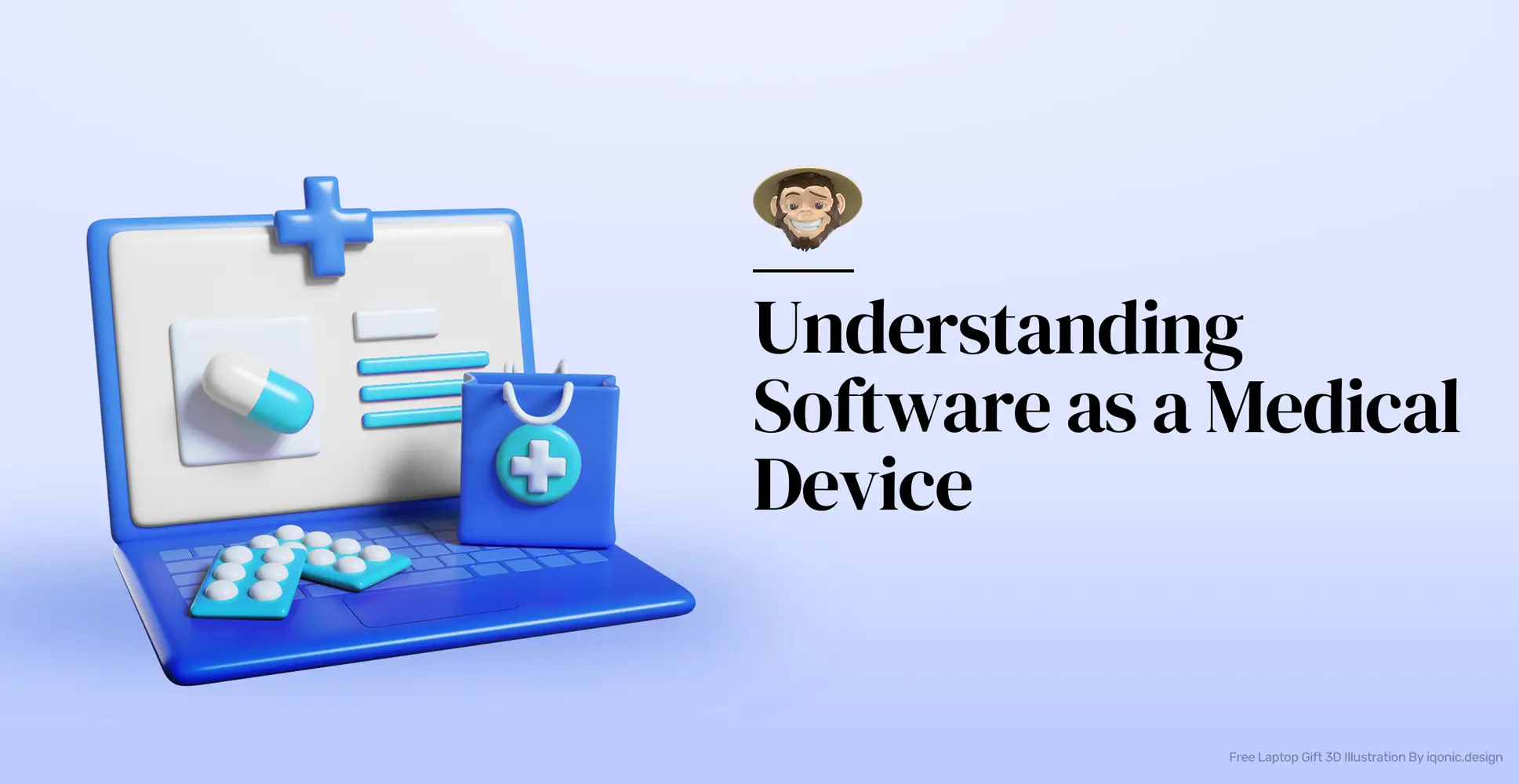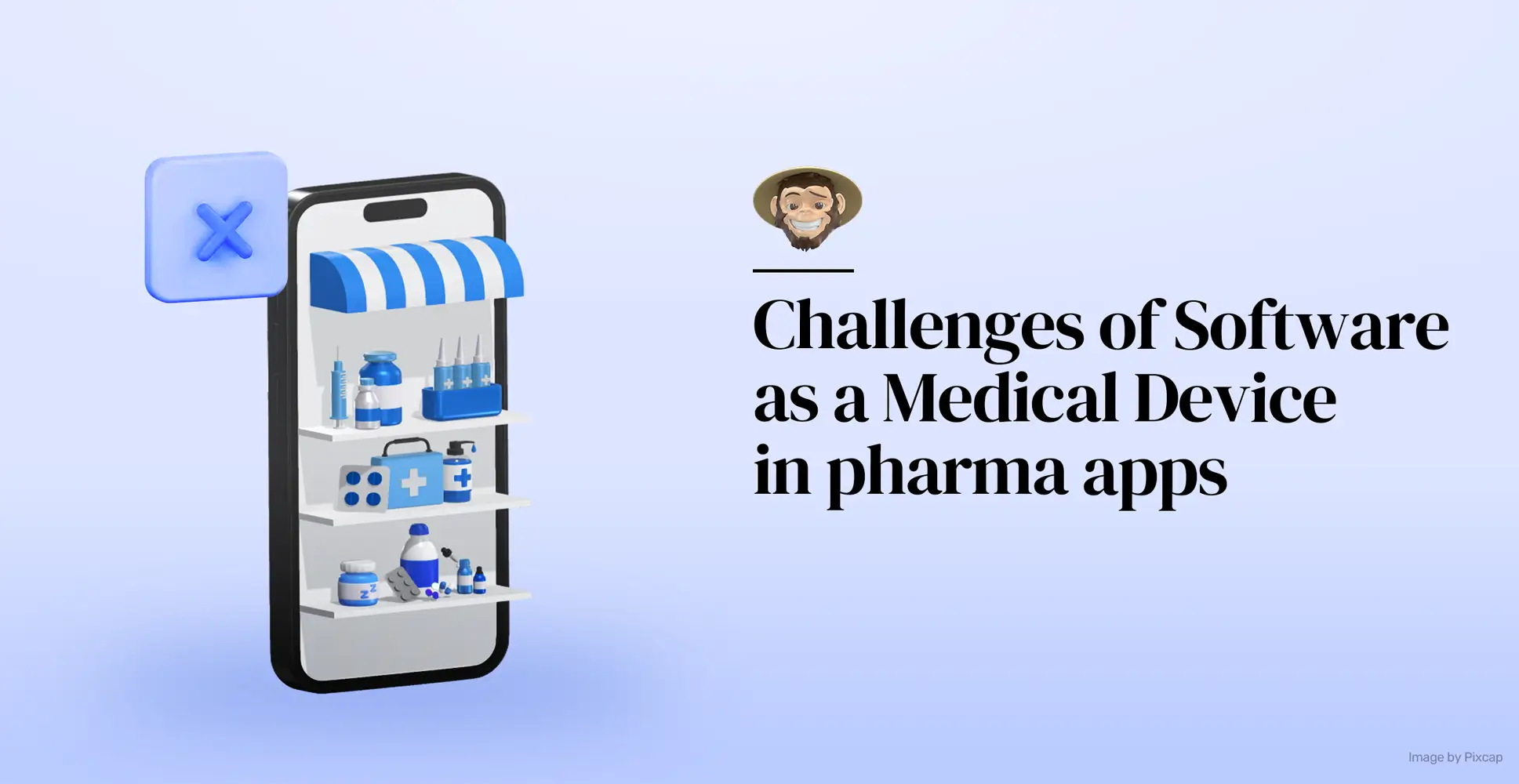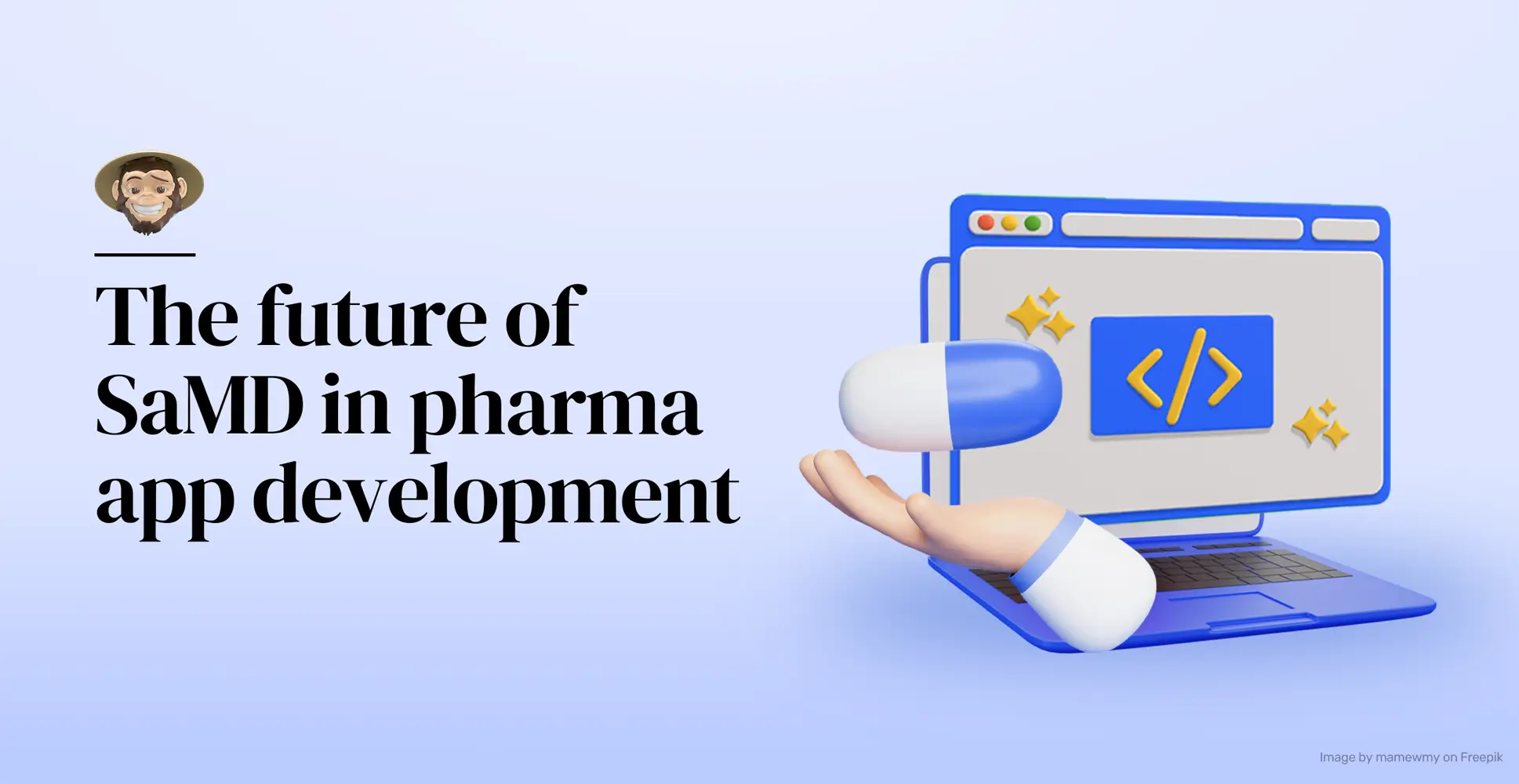Software as a Medical Device (SaMD) is not just a tool for pharma app developers; it’s a catalyst for innovation, improving patient outcomes, and reshaping the digital healthcare landscape.
The landscape of modern healthcare is ever-evolving, and in recent years, technological advancements have started playing an increasingly pivotal role in transforming how app developers and other stakeholders use digital healthcare solutions. These solutions, which have become pervasive in healthcare, are getting more robust as healthcare and pharma app developers double down on integrating emerging technologies to build highly innovative medical and pharmaceutical applications. Among these innovations, Software as a Medical Device (SaMD) stands out as a transformative force that promises to revolutionize how we use and manage medical devices and is poised to become a game-changer for the pharma industry. As healthcare professionals, app developers, and stakeholders in the pharmaceutical industry, this is a topic of utmost relevance to our professional interests.
In this blog article, we’ll delve deep into SaMD’s profound impact on pharmaceutical applications, including its benefits, challenges, and future prospects. Our aim is to equip you with a comprehensive understanding of this transformative technology, ensuring that you feel informed and knowledgeable. Let’s get started.

Understanding Software as a Medical Device
Software as a Medical Device, or SaMD, is a testament to the versatility of software applications in healthcare. It encompasses a variety of functions, from medical data gathering and diagnosis and treatment recommendations to chronic disease management and drug delivery system enhancement. The breadth of its applications is what truly sets SaMD apart from traditional medical devices.
SaMD’s adaptability and unique ability to function on any general-purpose computer or be integrated with a medical device truly empower this technology. This adaptability makes SaMD solutions highly flexible, scalable, and capable of swiftly incorporating new medical data and algorithms.
When it comes to pharma app development, the value of Software as a Medical Device (SaMD) is immeasurable. Its integration can revolutionize pharmaceutical applications, significantly improving drug research and development processes, enhancing patient care, and facilitating remote healthcare delivery. The following are just a few of the many benefits that SaMD can bring to pharmaceutical apps.

Benefits of SaMD in pharma apps
1. Enhanced patient care
Since SaMD software solutions can swiftly gather and process medical data, using them in pharma apps allows developers to implement functionality that delivers personalized treatment plans tailored to each individual patient. For instance, SaMD pharma apps can provide real-time insights based on a patient’s condition to help pharma companies design treatments via highly informed decisions.
2. Improved drug development
Pharmaceutical application developers can incorporate predictive analytics and machine learning algorithms into their Software as a Medical Device (SaMD) applications. These tools can analyze extensive datasets to help stakeholders more effectively identify new drug opportunities and potential candidates. SaMD can also aid in post-market surveillance by monitoring real-world drug side effects, ensuring the continued safety and efficacy of the drugs.
3. Chronic disease management
Chronic conditions such as diabetes, asthma, or dislipidemia pose a significant challenge to the global healthcare system and require constant monitoring. SaMD apps have revolutionized this process, providing physicians and pharmacists with the convenience of continuous monitoring through wearable devices and mobile healthcare applications. This not only aids in the early detection of complications but also streamlines treatment design and timely interventions.
4. Cost-effectiveness
SaMD plays a crucial role in early disease intervention, which can significantly decrease overall healthcare costs. By enhancing diagnostic accuracy and streamlining drug research and development, SaMD can help identify and treat diseases at their earliest stages. This can lead to fewer hospital admissions, a decreased need for invasive procedures, and substantial savings for patients and healthcare systems. Additionally, the scalability of software solutions allows for widespread deployment without significant additional costs.

Challenges of Software as a Medical Device in pharma apps
It’s undeniable that implementing SaMD in pharmaceutical applications offers numerous benefits. However, it also presents several challenges that must be addressed to ensure its successful deployment and utilization. Here are some of them.
1. Regulatory compliance hurdles
Unfortunately, the use of SaMD in pharma apps faces some challenges due to the regulatory landscape. Regulatory bodies such as the FDA and EMA have strict requirements to ensure the safety and effectiveness of medical software. The intricacy of these regulations can be a barrier, potentially slowing down the development and deployment of new SaMD applications, a matter of concern for the industry.
2. Data security and privacy
SaMD pharma apps often handle private patient data, such as medical records, genetic information, and personal health metrics. This information is not just data; it’s individuals’ personal and sensitive information. As pharma app developers, it’s our duty to ensure that robust data security is in place to protect it from breaches and cyberattacks. Compliance with data protection regulations such as GDPR and HIPAA is a necessary step in this process, requiring the implementation of strict data handling, storage, and sharing practices.
3. Interoperability
While the benefits of SaMD app integration with healthcare systems, including Electronic Health Records (EHRs) and other medical devices, are clear, achieving this level of interoperability is not without its challenges. The technical complexity of adhering to industry standards can pose significant hurdles. However, the ultimate goal remains unchanged-ensuring smooth data exchange and compatibility between various platforms and devices is a crucial step towards providing comprehensive patient care.
Examples of SaMD in pharma app development
Medisafe: Medisafe is a medication management app that helps patients manage their medication schedules and share their medication data with caregivers.
MyTherapy: MyTherapy is a health-tracking app that supports medication adherence, symptom tracking, and health metrics monitoring. It allows users to share reports with their healthcare providers to optimize treatment plans.

The future of SaMD in pharma app development
Software as a Medical Device (SaMD) is set to transform pharmaceutical app development, enhancing patient care, accelerating new drug research and development, improving accessibility, and reducing healthcare costs. As technology evolves, the scope of SaMD will expand, encompassing new therapeutic areas and medical conditions. The key to this progress lies in the collaboration between pharmaceutical companies, app development partners, and healthcare providers. By leveraging each other’s expertise, they can develop more sophisticated and effective SaMD solutions that address unmet medical needs.
With over ten years of experience in pharma and healthcare app development, we at Foonkie Monkey understand the importance of remaining relevant and innovative in the industry. We always strive to build beautiful mobile and software applications that add value to our users’ lives, so if you have any questions, get in touch!
